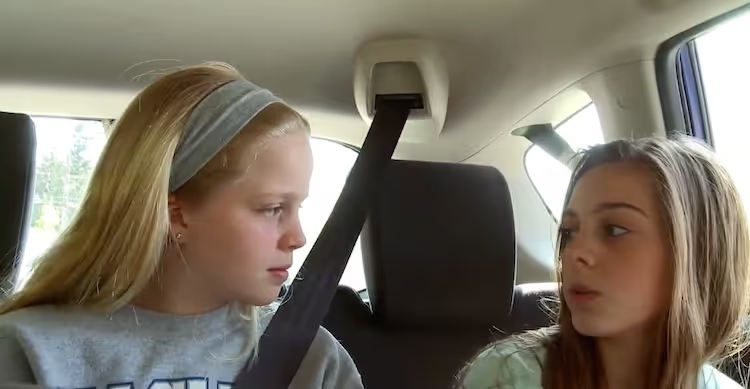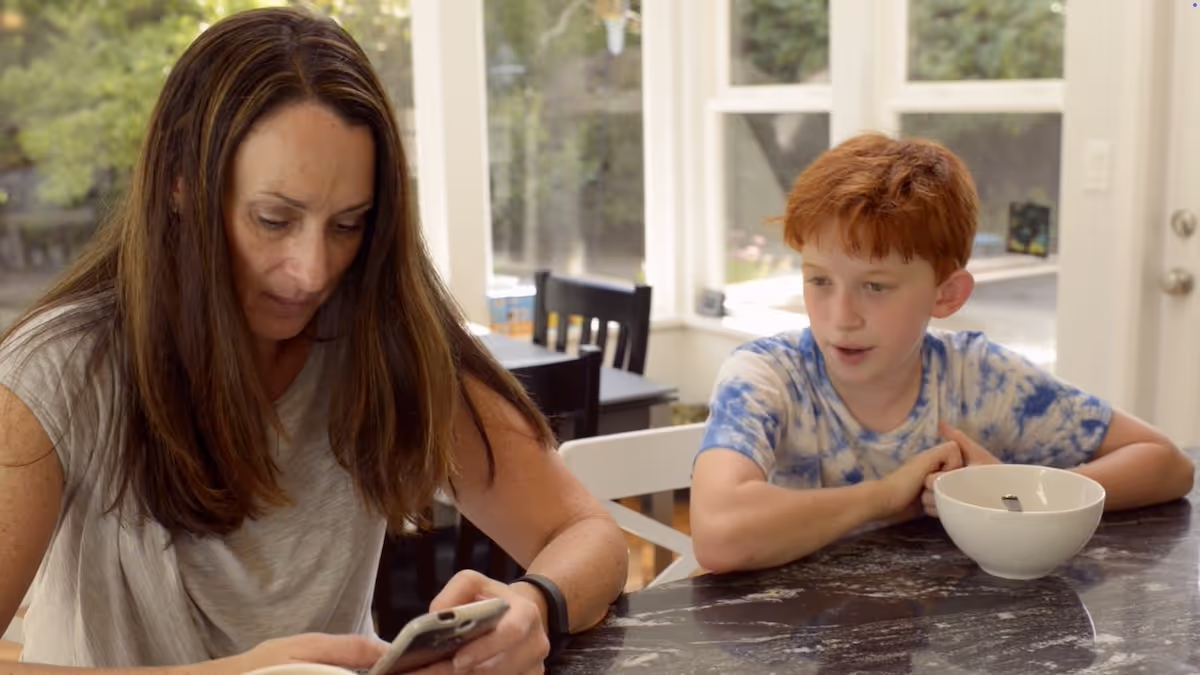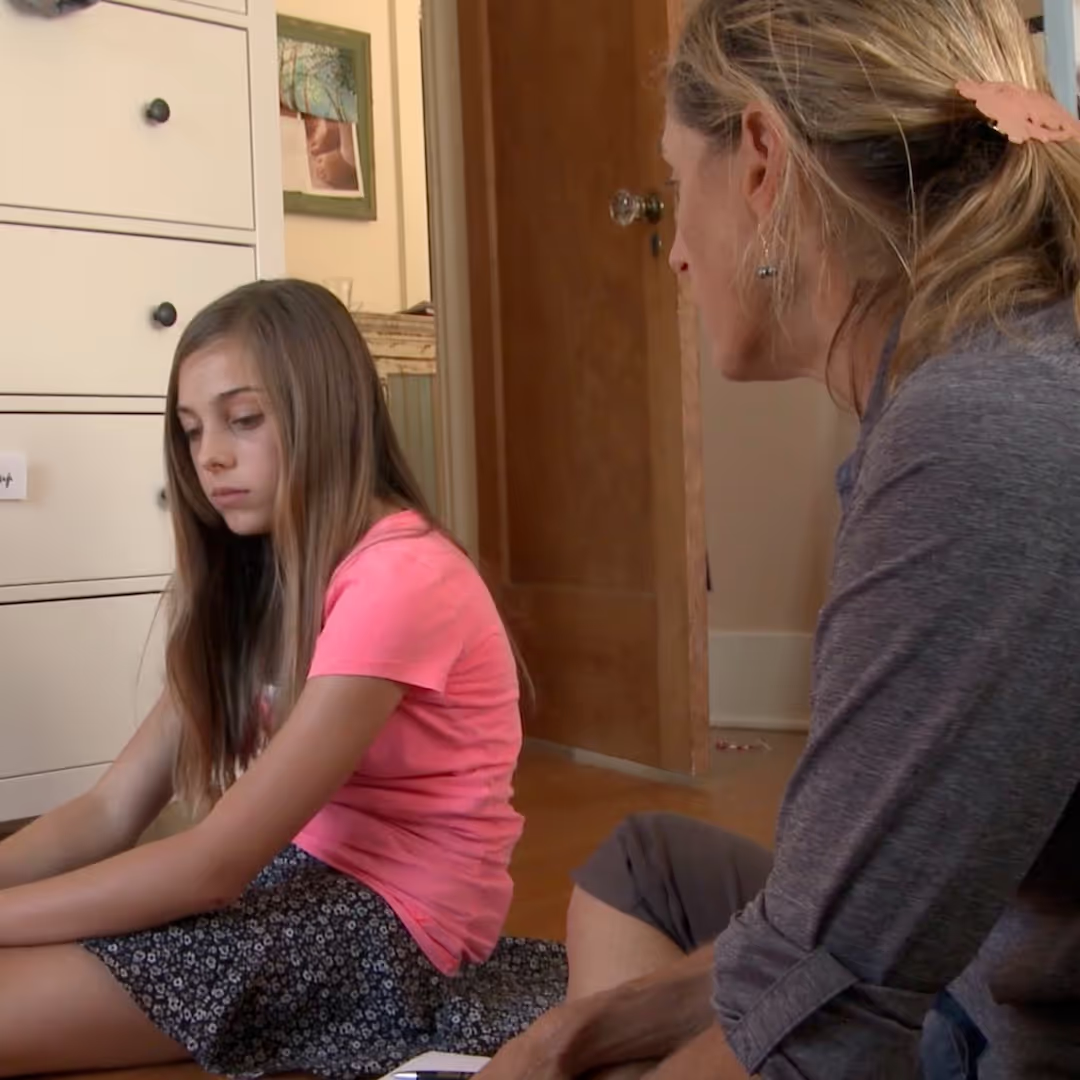



Last week we talked about screen-free zones. This week we are going to talk about one of the most important screen-free zones: the car. As drivers we know we can be distracted with the pings and buzzes of our cell phones or when we are bored at a stop light.
Two years ago my family decided to make car time, screen-free time. There is no question that it has been a great thing for our car conversations. There was a bit of touch and go when we started. When my kid’s friends would get in the car, I would gently tell them that we have a no cell phone policy in the car. At first, my kids were embarrassed that I would say this. But through our family conversations where we discussed the benefits of such a policy, over time they stopped being annoyed, and they don’t mind my telling their friends—seriously, they don't.
There are clear safety reasons why fewer distractions in the car are good. Distracted driving now causes more accidents than drinking. And yet it is not just about safety. Australia recently conducted a survey of 1000 families and found that 95% of parents believe the car is a place where kids can open up and the family can bond (I bet all of you reading this feel the same way). Yet, the parents in the study reported that more than 75% of their children are often on a tablet, phone or other screens, while in the car.
This week Apple released iOS11, its latest operating system. With it comes the long-awaited “Do Not Disturb While Driving” feature. Many have criticized Apple for not having this feature sooner. “Do Not Disturb While Driving” will darken your screen and block calls, texts and notifications while connected to your car via Bluetooth or when the car is in motion. It does not disconnect your ability to listen to music or navigation via Bluetooth.
Third-party apps have long prevented texting while the car is in motion, but stop short there. The new “Do Not Disturb While Driving” feature blocks distractions at a system level. When the car is in motion anyone who texts you while you are driving will receive an automated response saying you are driving and will respond when you arrive at your destination. A second message goes out asking if it’s an emergency, if so an urgent message will come through.
For this week’s TTT, talk with your children about your car rides to and from school, practices and road trips. Making the car a screen-free zone is safer for the driver and a wonderful opportunity for family bonding and excellent modeling for our future drivers. Here are some questions to ask:
As well as our weekly blog, we publish videos like this one every week on the Screenagers YouTube channel
Learn more about showing our movies in your school or community!
Join Screenagers filmmaker Delaney Ruston MD for our latest Podcast

Learn more about our Screen-Free Sleep campaign at the website!
Our movie made for parents and educators of younger kids
Learn more about showing our movies in your school or community!
Learn more about showing our movies in your school or community!
Join Screenagers filmmaker Delaney Ruston MD for our latest Podcast

Learn more about our Screen-Free Sleep campaign at the website!
Our movie made for parents and educators of younger kids
Join Screenagers filmmaker Delaney Ruston MD for our latest Podcast
As we’re about to celebrate 10 years of Screenagers, we want to hear what’s been most helpful and what you’d like to see next.
Please click here to share your thoughts with us in our community survey. It only takes 5–10 minutes, and everyone who completes it will be entered to win one of five $50 Amazon vouchers.

Last week we talked about screen-free zones. This week we are going to talk about one of the most important screen-free zones: the car. As drivers we know we can be distracted with the pings and buzzes of our cell phones or when we are bored at a stop light.
Two years ago my family decided to make car time, screen-free time. There is no question that it has been a great thing for our car conversations. There was a bit of touch and go when we started. When my kid’s friends would get in the car, I would gently tell them that we have a no cell phone policy in the car. At first, my kids were embarrassed that I would say this. But through our family conversations where we discussed the benefits of such a policy, over time they stopped being annoyed, and they don’t mind my telling their friends—seriously, they don't.
There are clear safety reasons why fewer distractions in the car are good. Distracted driving now causes more accidents than drinking. And yet it is not just about safety. Australia recently conducted a survey of 1000 families and found that 95% of parents believe the car is a place where kids can open up and the family can bond (I bet all of you reading this feel the same way). Yet, the parents in the study reported that more than 75% of their children are often on a tablet, phone or other screens, while in the car.
This week Apple released iOS11, its latest operating system. With it comes the long-awaited “Do Not Disturb While Driving” feature. Many have criticized Apple for not having this feature sooner. “Do Not Disturb While Driving” will darken your screen and block calls, texts and notifications while connected to your car via Bluetooth or when the car is in motion. It does not disconnect your ability to listen to music or navigation via Bluetooth.
Third-party apps have long prevented texting while the car is in motion, but stop short there. The new “Do Not Disturb While Driving” feature blocks distractions at a system level. When the car is in motion anyone who texts you while you are driving will receive an automated response saying you are driving and will respond when you arrive at your destination. A second message goes out asking if it’s an emergency, if so an urgent message will come through.
For this week’s TTT, talk with your children about your car rides to and from school, practices and road trips. Making the car a screen-free zone is safer for the driver and a wonderful opportunity for family bonding and excellent modeling for our future drivers. Here are some questions to ask:
As well as our weekly blog, we publish videos like this one every week on the Screenagers YouTube channel
Sign up here to receive the weekly Tech Talk Tuesdays newsletter from Screenagers filmmaker Delaney Ruston MD.
We respect your privacy.

Last week we talked about screen-free zones. This week we are going to talk about one of the most important screen-free zones: the car. As drivers we know we can be distracted with the pings and buzzes of our cell phones or when we are bored at a stop light.
Two years ago my family decided to make car time, screen-free time. There is no question that it has been a great thing for our car conversations. There was a bit of touch and go when we started. When my kid’s friends would get in the car, I would gently tell them that we have a no cell phone policy in the car. At first, my kids were embarrassed that I would say this. But through our family conversations where we discussed the benefits of such a policy, over time they stopped being annoyed, and they don’t mind my telling their friends—seriously, they don't.
There are clear safety reasons why fewer distractions in the car are good. Distracted driving now causes more accidents than drinking. And yet it is not just about safety. Australia recently conducted a survey of 1000 families and found that 95% of parents believe the car is a place where kids can open up and the family can bond (I bet all of you reading this feel the same way). Yet, the parents in the study reported that more than 75% of their children are often on a tablet, phone or other screens, while in the car.
This week Apple released iOS11, its latest operating system. With it comes the long-awaited “Do Not Disturb While Driving” feature. Many have criticized Apple for not having this feature sooner. “Do Not Disturb While Driving” will darken your screen and block calls, texts and notifications while connected to your car via Bluetooth or when the car is in motion. It does not disconnect your ability to listen to music or navigation via Bluetooth.
Third-party apps have long prevented texting while the car is in motion, but stop short there. The new “Do Not Disturb While Driving” feature blocks distractions at a system level. When the car is in motion anyone who texts you while you are driving will receive an automated response saying you are driving and will respond when you arrive at your destination. A second message goes out asking if it’s an emergency, if so an urgent message will come through.
For this week’s TTT, talk with your children about your car rides to and from school, practices and road trips. Making the car a screen-free zone is safer for the driver and a wonderful opportunity for family bonding and excellent modeling for our future drivers. Here are some questions to ask:
As well as our weekly blog, we publish videos like this one every week on the Screenagers YouTube channel


Parenting in this digital age is full of challenges. I imagine many of you are nodding in agreement. And when we look for advice online, it can feel like a sea of perfect experts with perfect advice: “Just follow these three easy steps and everything will fall into place.” In this week’s blog, I share a story about a moment with my daughter Tessa that did not go quite as planned but ended up teaching us both something important.
READ MORE >
Wow! Summer really goes by fast, doesn’t it? Back-to-school is already here for some and not far away for others. Ahead of this school year, I’ve hand-picked four of our most useful blogs. Practical, timely guides to help you set your family up for a healthier, more balanced relationship with technology in the months ahead.
READ MORE >for more like this, DR. DELANEY RUSTON'S NEW BOOK, PARENTING IN THE SCREEN AGE, IS THE DEFINITIVE GUIDE FOR TODAY’S PARENTS. WITH INSIGHTS ON SCREEN TIME FROM RESEARCHERS, INPUT FROM KIDS & TEENS, THIS BOOK IS PACKED WITH SOLUTIONS FOR HOW TO START AND SUSTAIN PRODUCTIVE FAMILY TALKS ABOUT TECHNOLOGY AND IT’S IMPACT ON OUR MENTAL WELLBEING.
